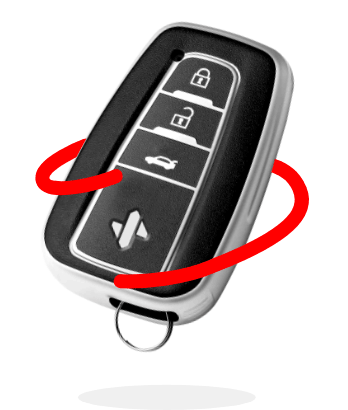But there are plenty of situations where you might need to trade in your car earlier than expected.
From an increase in the size of your family to a loss of a job to simply needing something a little different, there are any number of reasons why you might be ready to trade in your vehicle. When that vehicle is still financed, though, you might have questions around how to navigate the trade-in.
So can you trade in your vehicle if you still owe money on it? The short answer: YES! If you’re looking to trade in your car, but it’s still financed, there are a few important things you need to know first. There are some risks involved, so make sure you do your research before making any decisions.
Read on for our guide to trading in your financed vehicle, including:
- Pros & cons of trading in a financed car
- Positive & negative trade-in equity
- 5 steps to trade in a car with a loan
- When is trading in a good or bad idea?
PROS & CONS OF TRADING IN A FINANCED CAR
Before you trade in a vehicle you owe money on, there are some considerations you must make:
Pros of trading in your financed vehicle
- Decrease your monthly car payment: While you’ll typically still have a monthly car payment, it’s possible to decrease it with a new vehicle.
- Decrease the cost of a new car: As you’ll soon see, positive equity on your trade-in vehicle will ensure you’re able to negotiate the price down on the new vehicle.
- Get a better rate: When you refinance your new car, it’s possible to get an even better loan rate or terms. That could mean saving money in the long-term.
Cons of trading in your financed vehicle
- Increase your monthly car payment: If you choose a more expensive vehicle than you currently have, then your monthly car payment will increase.
- Responsible for money down: As you’ll also soon see, negative equity with your current vehicle will mean you owe the difference for your existing loan.
POSITIVE & NEGATIVE TRADE-IN EQUITY
One of the biggest factors to consider when you want to trade in your vehicle is whether you have positive or negative equity.
Positive Equity
When your vehicle is valued at more than you owe on your existing loan, you have positive equity.
For instance, you might owe $5,000 on your car that’s valued at $17,000. After paying off the remainder of the existing loan, that means you have $12,000 to put towards a new vehicle.
This is an ideal situation and certainly a positive one. With positive equity, you’ll already have money to put toward the trade, which will help negotiate a better price and ultimately decrease the cost of your new vehicle.
Negative Equity
As you can guess, negative equity is just the opposite of positive equity. Negative equity means your vehicle is valued at less than you owe on your existing loan.
For example, you might owe $25,000 when your vehicle is currently worth $23,000. You are responsible for the $2,000 at trade-in, whether it’s payment in cash or rolling the amount into another loan.
Negative equity is also known as an “upside-down” or even “underwater” loan. Since you owe more than you’ve paid on the loan, it’s not an ideal position to be in when you’re trading in your financed vehicle.
However, while negative equity can make trade-ins challenging, it doesn’t mean that it’s impossible.
5 STEPS TO TRADE IN A CAR WITH A LOAN
If you’re considering trading in your financed vehicle, follow these steps to ensure you get the best deals — both with your trade-in and with your loan for the new car.
1. Know the numbers.
Start by getting clear on a few essential numbers. You’ll need to know 1) the payoff amount for your existing loan, and 2) the fair market value for your existing vehicle.
Knowing both of these numbers will mean you’re prepared prior to walking into a dealership. Most importantly, you’ll know whether you have positive or negative equity on the vehicle.
2. Prepare for the trade-in.
If you’re ready to move forward with the trade-in, you’re still not quite ready to talk to a dealer yet.
First, you’ll want to prepare by getting clear on your budget for the new vehicle. Ensure the new loan won’t be so high that you’re living beyond your means.
Next, prepare your vehicle. Take any necessary steps to get your car in the best shape possible, including a deep clean and any minor repairs. This way, your car can be valued as high as possible.
Speaking of value, since most valuations you’ll find are a range based on your car’s condition, be ready to negotiate with the dealership. (That’s why knowing the value ahead of time is so powerful.)
Lastly, get all your vehicle-related paperwork together. The dealership will be interested in anything that’s happened with the car, including maintenance work. It’s best to be prepared for any questions in advance.
3. Get clear on your trade-in options.
Start to get an idea of what new vehicle you’d like to trade-in for. As you hone in on an exact make and model, along with your budget, you’ll get a better sense of what costs (and what new loan amount) you’re looking at.
If you have negative equity, do your homework on loan payment options. Will you be able to pay the remainder in cash or will you need to finance the difference? If you’re dealing with the latter, be prepared by researching loan options in advance.
4. Shop around for the best deals.
Trading in your financed vehicle is no different from shopping for vehicles without a car loan. Visit multiple dealerships (and even consider privately selling) to find the best option for both your trade-in and your new vehicle. You’re prepared with everything you need now, so you can get the best price for your trade-in.
5. Close the deal.
Once you’ve negotiated a deal that you’re happy with, it’s time to close!
Review any contracts, loan agreements, and payment information with a fine-tooth comb to ensure there are no hidden costs, surprise interest rates, or additional fees you were unaware of.
WHEN IS TRADING IN A GOOD OR BAD IDEA?
So all this said, is trading in your vehicle a good or a bad idea? While this is ultimately a personal decision, there are some factors that may guide you in the right direction.
When is trading in a financed vehicle a good idea?
- If you have positive equity
- If the vehicle costs are too high, such as gas or insurance costs
- If the monthly loan payment amount is too high
- If you can trade-in for a great price, such as at the end of the year or other times when vehicle inventory is low
When is trading in a financed vehicle a bad idea?
- If you have negative equity
- If you have a new loan
- If your vehicle has been in an accident (and, as a result, will be worth less)
- If your vehicle is almost paid off, and there’s no financial or personal need to get a new car
If you’re thinking about trading in your car, understand the risks involved. You may be able to trade in your vehicle even if you still owe money on it, but keep the things you learned here in mind and follow the five steps above for the best outcome with your trade-in.
And if you need help finding the best car insurance coverage for the best price, start by speaking to a SimplyIOA agent at 833.872.4467 or get an auto insurance quote online now.










